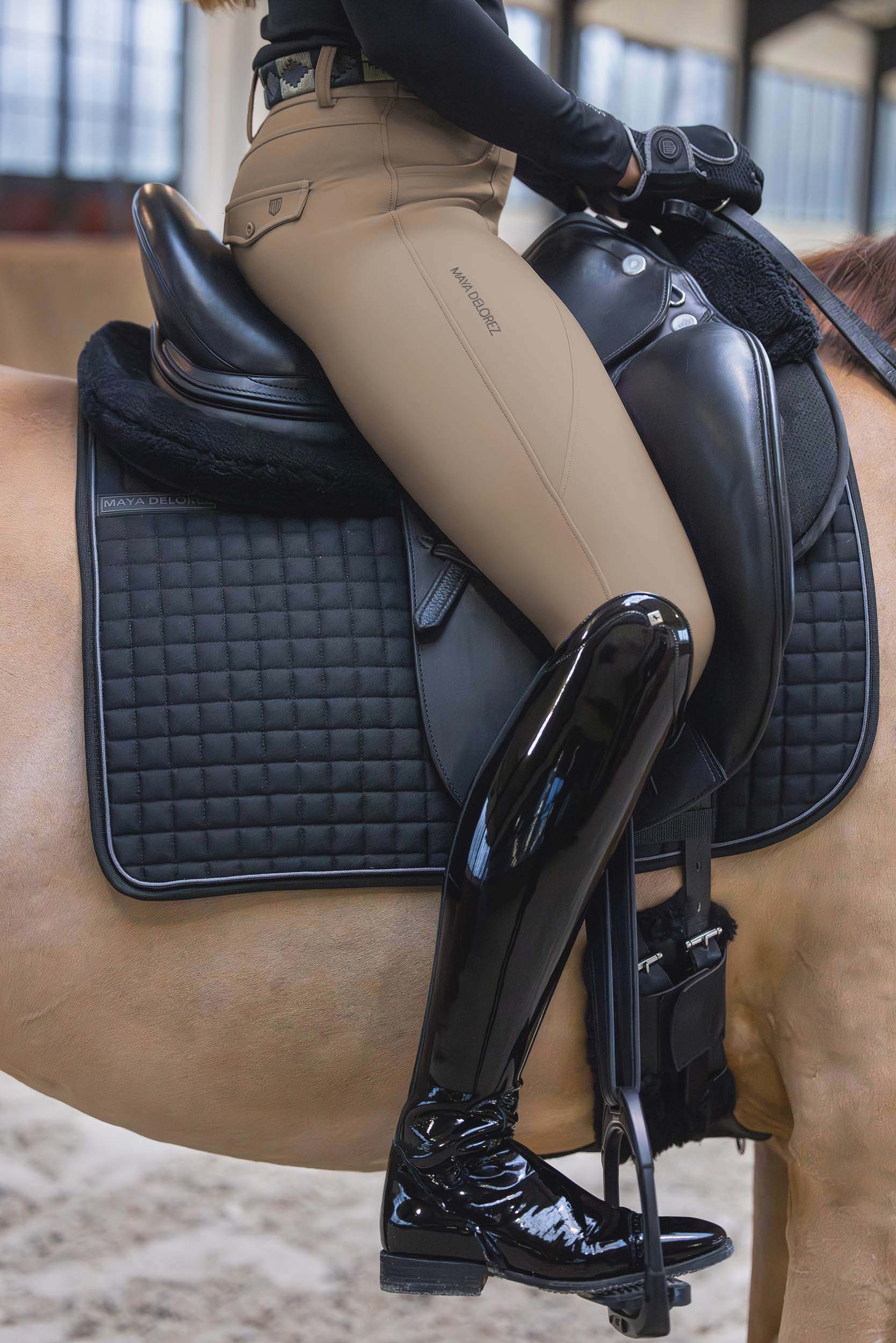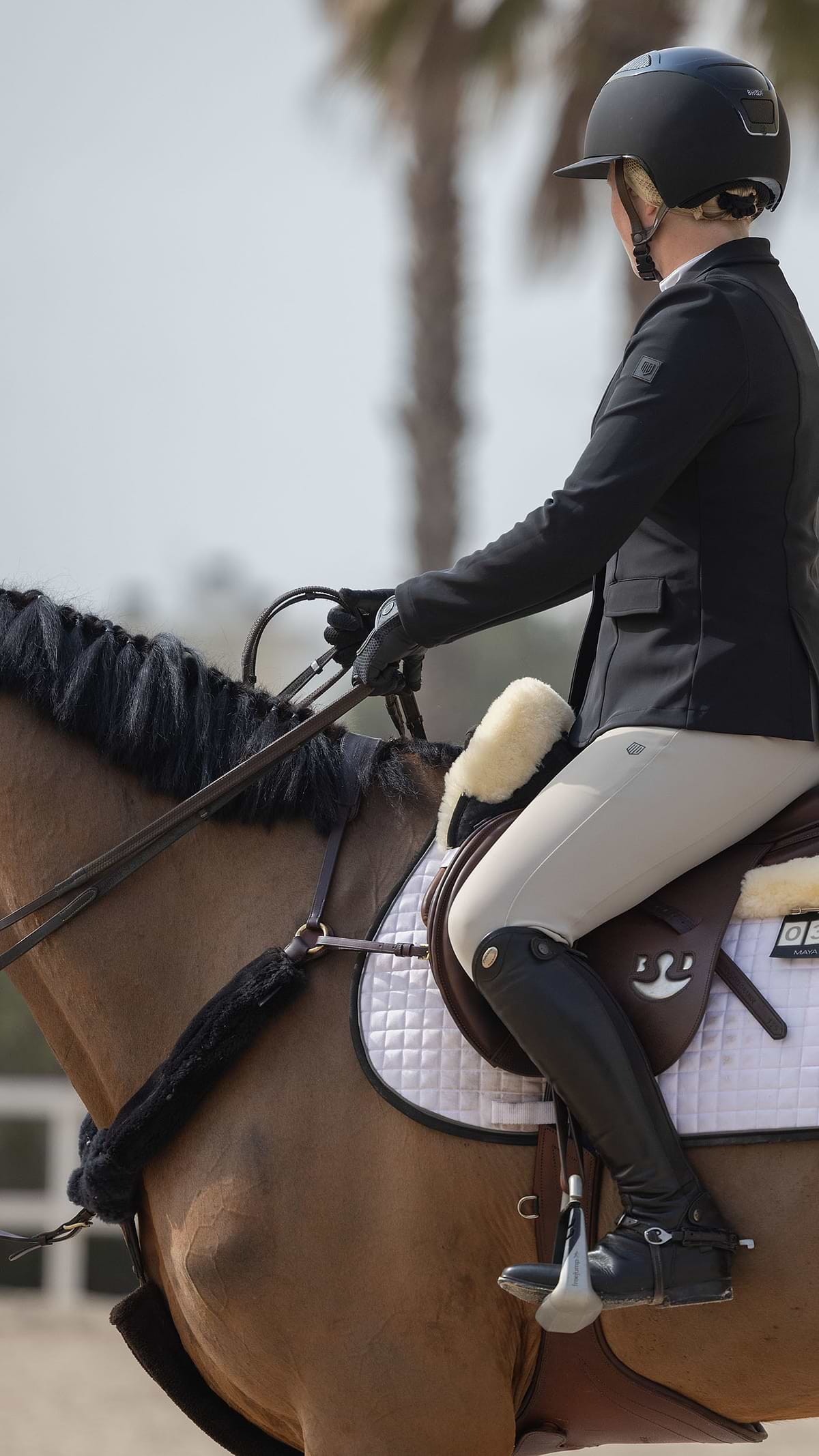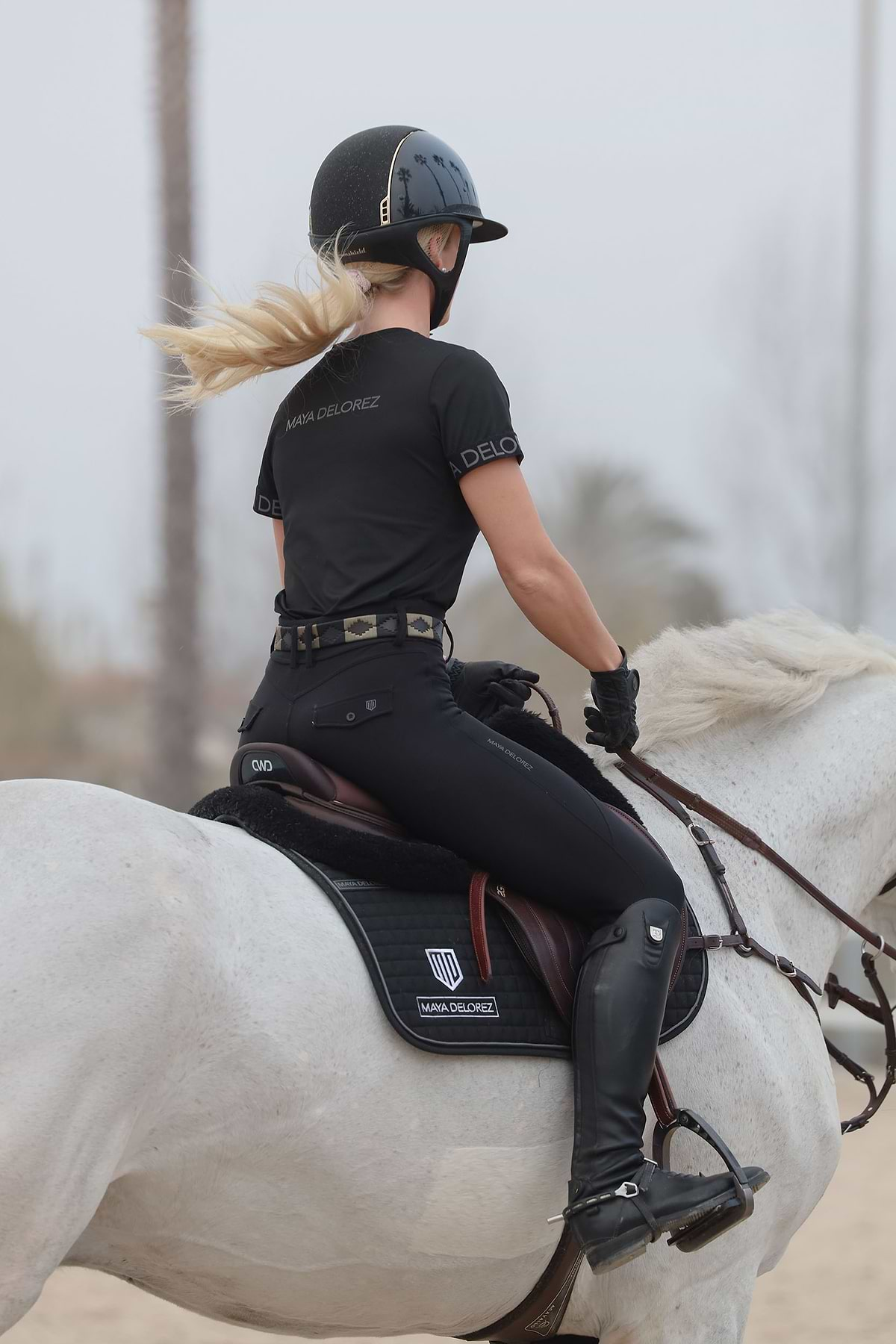A Guide on How to
Improve Your Riding Seat
We all know it’s essential to have a good seat when riding. But what does ‘a good riding seat’ really mean, and how do you get one? Equestrian workout coach Laura Ahti is here to explain.
Ellinor
Thu 19 Dec - 24

A Guide on How to
Improve Your Riding Seat
We all know it’s essential to have a good seat when riding. But what does ‘a good riding seat’ really mean, and how do you get one? Equestrian workout coach Laura Ahti is here to explain.
Ellinor
Thu 19 Dec - 24
Seat this, seat that. A steady and balanced seat in the saddle is key to any rider – we all know this. But sometimes, the definition of a good seat can seem vague. What is it really, and what can we do to improve it?
Laura Ahti is a workout coach and the founder of equestrian workout app Equestrain. In her daily work, she guides her clients through workout sessions that help them become stronger as riders. Let’s have a chat with her!
Hi Laura! 👋 Could you explain what it means to have a good riding seat?
– A good seat means a balanced and aligned position in the saddle where it's easy for you to be accurate with your aids while being close to and feeling a good connection with the horse.
We often use a mental image of “three buckets” on top of each other to describe a correct seat – your hips, your rib cage, and your head. When your muscle chains are active and working optimally, these “three buckets” are aligned and you can maintain that lightness and harmony in your riding that makes us feel like everything just flows.
A proper seat is a result of you having a good connection with your feet in the stirrups – this is the base of your balance. From there, we have our legs long and around the horse, sitting deep and stable in the saddle on both of our seat bones. The core muscles are connecting the hips to the upper body, and aligning them on top of each other.
From this aligned position, it is very easy for you to 1. change your position as needed with ease, 2. use light aids and 3. to have a soft but stable contact.
“Your seat is your most important tool as a rider.”
– Laura Ahti
Why is it important to have a good seat as a rider?
– Your seat is your most important tool as a rider. You feel the horse through your body, and the connection you have with your horse is a direct reflection of how well you're connected to yourself and to your body. Your seat also affects the horse’s biomechanics and balance – there is a clear connection between things like gait quality, a horse’s ability to move through the back or the quality of a horse’s jump, and the rider’s position.
Your seat should never limit your riding skill development, but this can often be the case, unfortunately. For example, you may not be able to sit quickly enough between jumps, have enough stamina for longer dressage tests, or be able to sit the trot. By working out properly, we can help our bodies to be better prepared for the physical demands of riding. While riding, you should be focused on precisely that, not on correcting your seat.
Which muscle groups are vital for a good seat?
– It depends a lot on the individual rider. Each seat challenge has a clear root cause, and sometimes the vital muscle group for one rider is not relevant to another. However, there are some key elements what we call “must haves” in every rider’s workout program:
Core and hip flexor strength. This helps you to absorb the movement energy from your horse, and to follow your horse’s movements with ease.
Hip stability, especially gluteus medius strength. This is a muscle on the side of your glute, and it has a very important role in keeping you in the middle of the saddle. It helps you use your lower leg without gripping with your knee. Different side plank variations and single leg exercises are recommended for this.
Mid-back and posterior shoulder strength helps you get that effortless upper body position and prevents your shoulders from collapsing forward in the saddle.

When I’m on horseback, what should I think of to maintain a good seat?
– Check these three things and you'll have a very good start:
Your stirrups are placed just behind the widest part of the soles of your feet and you're supporting your heel a bit below horizontal. This creates a balanced base for your seat. If you push your heel all the way down, you lock your ankle joint and you will be more rigid with your seat (this way, it’ll be more difficult to sit in your horse's movements).
Imagine you have a down-pointing triangle on top of your hips and it's pointing straight down, meaning you have your hips in a neutral position. You should be lightly engaged through your pelvic floor, hip, and core, with a neutral spine.
Breathe and feel your upper body aligning on top of your hips. Imagine that someone’s pinching you very gently from the bottom corner of your shoulder blade and find the support for your arm all the way from your mid-back and shoulder blade. This aligns your upper body nicely and helps you to have a good contact.
I struggle with keeping my legs still while riding. What can I do?
– Swinging lower legs are a result of your body compensating for lack of hip strength and stability. If you use your inner thighs to stabilize your seat more than you use your core, hamstrings, and glutes, you'll end up gripping too much with your knee and it’ll be harder to keep the lower leg still. Focus on workouts that strengthen your connection through hamstrings, glutes, and core to keep your hips neutral and build in more capacity, especially in your lower abs.
“Your seat should never limit your riding skill development, but this can often be the case, unfortunately.”
– Laura Ahti
I struggle with balance while riding. What can I do?
– Having a good balance in the saddle means your body is working well through different muscle chains, and that you’re having good contact through the stirrups. Many riders have inactive muscles in their feet, even though they are a major part of creating that stable stirrup contact for a balanced seat. Focus on improving that contact through for example different floating heel exercises.
I struggle with posture while riding. What can I do?
– Always look at the hip first. Is the hip in neutral or is the hip tilted back, resulting in that rounded position and difficulty to sit upright? If the hip is in neutral, focus on upper body strength, especially the mid-back and posterior side of your shoulders. This helps your shoulders from collapsing forward. If you're sitting over your seat bones in that rounded position, we need to first help your hips back to neutral by strengthening your hip flexors, lower core, and back extensor muscles. Only then do we really get the benefits from strengthening the upper body.
Wow, thanks a lot Laura! Brb, hitting the gym right away. 🏋
